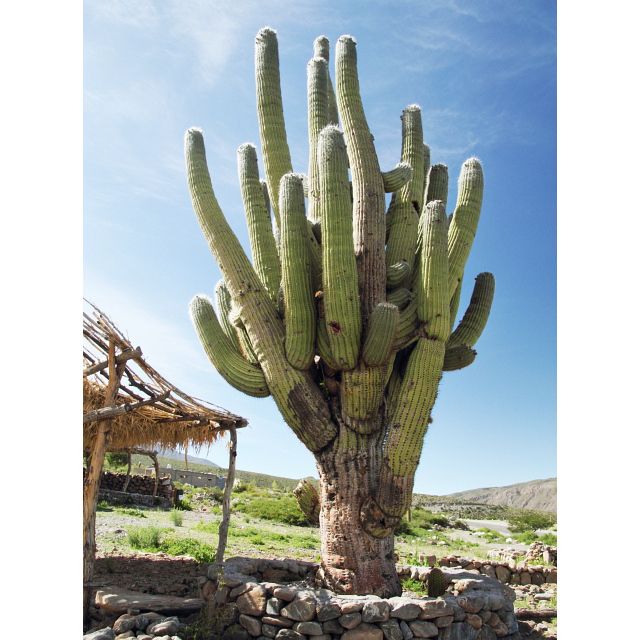

The western slopes of the Eastern Cordillera, heading towards the Valle Santa María, are well protected against the humid air masses pushing towards the eastern margin of the Andes. They represent an open semi-desert landscape with columnar cacti of impressive height, storing a considerable amount of water in their stems. A closer look, however, reveals several more strategies which are used by plants to survive with limited water supply. These can be well observed at the otherwise inconspicious Observatorio Astronómico de Ampimpa along the road between Amaicha del Valle and the Paso El Infernillo. It is not by chance that this area is known as Los Cardones, the Spanish term for columnar cactus: the many tall individuals of Echinopsis terscheckii immediately catch the travellers' eyes.

The art of survival in the desert
Thorn shrub semi-deserts are characterized by amounts of 125 mm to 250 mm of precipitation each year, whereas the rest of the time remains dry. Plants have developed various adaptation strategies to cope with these harsh conditions.
Try to identify these strategies, using the images and the points mentioned below.
- Describe the photographs.
- Which adaptation strategies belong to which plant? It is possible that the same plant uses more than one of the strategies.
- Which plant, do you think, uses the most strategies to survive in arid regions?
Click the corresponding check boxes. The number above each box refers to the number of the photograph.


Click on the arrows or into the image and learn more about how plants adapt to dry habitats.













